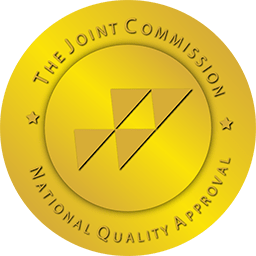Fentanyl addiction is a growing concern in today’s society. This synthetic opioid is highly addictive and can lead to devastating consequences for those who abuse it. Fortunately, there are various treatment options available for those struggling with fentanyl addiction. However, choosing the right treatment can be a daunting task. With so many options to consider, it’s important to understand the various approaches to fentanyl addiction treatment and determine which one is best suited for your individual needs. In this comprehensive guide, we’ll take a closer look at the different treatment options available, including medication-assisted treatment, behavioral therapy, and holistic approaches. By the end of this guide, you’ll have a better understanding of the treatment options available and be able to make an informed decision about which one is right for you or your loved one. So, let’s dive into the world of fentanyl addiction treatment and explore the path to recovery.
Understanding Fentanyl Addiction
Fentanyl is a synthetic opioid that is used medically to manage severe pain, such as pain from cancer. It is also illegally produced and sold on the street as a recreational drug. Fentanyl is highly addictive because it binds to the brain’s opioid receptors and increases dopamine levels, resulting in a euphoric high. However, the body quickly builds a tolerance to the drug, which means that a person needs higher doses to achieve the same effect. This can lead to overdose and death.
Signs and Symptoms of Fentanyl Addiction
Fentanyl addiction can be difficult to detect because the drug is often mixed with other substances, such as heroin or cocaine. However, there are some common signs and symptoms of fentanyl addiction, including:
- Drowsiness
- Confusion
- Nausea and vomiting
- Slow breathing
- Pinpoint pupils
- Itching and scratching
- Constipation
- Mood swings
- Social withdrawal
- Financial problems
If you or your loved one is displaying any of these signs or symptoms, it’s important to seek help immediately.
Why Fentanyl Addiction is so Dangerous
Fentanyl addiction is dangerous because it can lead to overdose and death. Fentanyl is up to 100 times more potent than morphine, and a small amount can be fatal. In addition, fentanyl is often mixed with other substances, which can increase the risk of overdose. Moreover, fentanyl addiction can have long-term effects on a person’s physical and mental health, including respiratory problems, heart problems, liver and kidney damage, depression, anxiety, and psychosis.
Fentanyl Addiction Treatment Options
There are several treatment options available for fentanyl addiction, including inpatient treatment, outpatient treatment, medication-assisted treatment, behavioral therapy, and holistic approaches. Each option has its own advantages and disadvantages, and choosing the right one depends on a person’s individual needs and circumstances.
Inpatient Treatment
Inpatient treatment, also known as residential treatment, involves living in a treatment facility for a certain period of time, usually 30 to 90 days. Inpatient treatment provides around-the-clock medical and emotional support and offers a structured environment that helps people focus on their recovery. In addition, inpatient treatment often includes detoxification, which is the process of removing fentanyl from the body and managing withdrawal symptoms.
However, inpatient treatment can be expensive, and some people may not be able to take time off work or family responsibilities to attend. In addition, inpatient treatment may not be necessary for everyone, and some people may prefer a less restrictive treatment option.
Outpatient Treatment
Outpatient treatment allows people to receive treatment while continuing to live at home and attend work or school. Outpatient treatment can be more flexible and less expensive than inpatient treatment, and it can be tailored to a person’s individual needs. Outpatient treatment often includes counseling and therapy sessions, medication management, and support groups.
However, outpatient treatment requires a high level of motivation and self-discipline, and it may not be suitable for people with severe addiction or co-occurring mental health disorders. In addition, outpatient treatment may not provide the same level of medical and emotional support as inpatient treatment.
Medication-Assisted Treatment
Medication-assisted treatment (MAT) involves using medications to manage withdrawal symptoms and cravings and prevent relapse. MAT is often used in combination with behavioral therapy and support groups. The most common medications used for fentanyl addiction are methadone, buprenorphine, and naltrexone.
MAT can be an effective treatment option for people with severe addiction or co-occurring mental health disorders. MAT can also help reduce the risk of overdose and improve social functioning. However, MAT can be expensive, and some people may experience side effects from the medications.
Behavioral Therapy
Behavioral therapy involves working with a therapist to identify and change negative thought patterns and behaviors that contribute to addiction. Behavioral therapy can be delivered in individual or group settings and can include cognitive-behavioral therapy, motivational interviewing, and contingency management.
Behavioral therapy can be an effective treatment option for people with mild to moderate addiction and can help improve coping skills and emotional regulation. However, behavioral therapy may not be suitable for people with severe addiction or co-occurring mental health disorders.
Holistic Approaches to Fentanyl Addiction Treatment
Holistic approaches to fentanyl addiction treatment focus on treating the whole person, including physical, emotional, and spiritual aspects. Holistic approaches can include yoga, meditation, acupuncture, massage therapy, and nutritional counseling.
Holistic approaches can be a complementary treatment option for people with all levels of addiction and can help reduce stress and improve overall well-being. However, holistic approaches may not be effective as a standalone treatment option and should be used in combination with other treatment options.
Choosing the Right Fentanyl Addiction Treatment Program
Choosing the right fentanyl addiction treatment program depends on a person’s individual needs and circumstances. It’s important to consider factors such as the severity of addiction, co-occurring mental health disorders, financial and insurance coverage, and personal preferences. It’s also important to seek help from a qualified healthcare professional who can provide a comprehensive assessment and recommend appropriate treatment options.
The Importance of Aftercare
Aftercare is an important component of fentanyl addiction treatment and involves ongoing support and counseling after completing a treatment program. Aftercare can include support groups, counseling, and medication management. Aftercare can help reduce the risk of relapse and improve long-term outcomes.
Conclusion
Fentanyl addiction is a serious and potentially fatal condition, but there are several treatment options available. Inpatient treatment, outpatient treatment, medication-assisted treatment, behavioral therapy, and holistic approaches are all viable options, and choosing the right one depends on a person’s individual needs and circumstances. It’s important to seek help from a qualified healthcare professional and to consider factors such as the severity of addiction, co-occurring mental health disorders, financial and insurance coverage, and personal preferences. With the right treatment and ongoing support, recovery from fentanyl addiction is possible.
Are you ready to start your recovery? Our counselors are available 24 hours a day. Call 833.970.2054.











